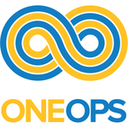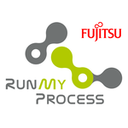Application Lifecycle Management software: purchase guide
Application Lifecycle Management Software in 2025: Control the Chaos, Build with Confidence
What Is Application Lifecycle Management Software
Application Lifecycle Management (ALM) software is the command center for every stage of your software's life — from planning and development to testing, deployment, and maintenance. It brings all the pieces together: people, processes, and tools, in one unified platform.
In today’s fast-paced digital landscape, ALM is more than just version control or project tracking. It’s about delivering consistent value through structured workflows, real-time collaboration, and full visibility into how software evolves over time. Whether you're working in agile, DevOps, or hybrid environments, ALM software ensures that your apps are not only built faster — but smarter, safer, and more aligned with business goals.
Why ALM Software Matters in 2025
Software development has become a continuous process. Releases are faster, requirements change rapidly, and teams are more distributed than ever. ALM software helps you stay ahead by bringing discipline and agility to the way applications are built and maintained.
It’s not just about building code — it’s about managing risk, ensuring quality, and delivering features that actually work in the real world. For tech leaders, it means fewer surprises at launch. For developers, fewer headaches. For customers, better products that evolve with their needs.
ALM isn't just about software — it's about software that performs, lasts, and improves continuously.
How to Choose the Right ALM Software
Choosing an ALM solution starts with understanding your workflow. Are you building complex enterprise systems or deploying mobile apps with rapid updates? Your use case will guide your needs.
Look for platforms that support your development methodology — be it agile, DevOps, or waterfall. Collaboration tools, integrations with source control systems, and real-time dashboards are no longer optional. You’ll also want built-in tools for requirement tracking, automated testing, version control, and release management — all in one place.
Ease of integration with your existing tech stack is key. Whether you're using Jira, GitHub, Jenkins, or Kubernetes — your ALM tool should act as the glue, not the wrench.
And don’t forget the people factor. Your developers, testers, product managers, and even stakeholders should find the platform intuitive. The more usable the tool, the more adoption you'll get — and the more value you'll unlock.
How to Successfully Implement ALM Software
Start with a clear rollout plan. That means mapping out your workflows, identifying champions on each team, and prioritizing the features that solve your most immediate pain points. Begin with a pilot project before scaling up.
Training is crucial. ALM touches multiple roles, so onboarding should include devs, QA, product owners, and IT admins. Make sure everyone understands how the tool will support—not complicate—their work.
Establish measurable KPIs: think cycle time reduction, defect escape rate, release velocity. Your ALM solution should empower your team to improve, sprint after sprint.
Finally, don’t treat ALM as a one-and-done. Keep refining your workflows, integrating new tools, and using analytics to continuously optimize how your team delivers software.
Top Application Lifecycle Management Software in 2025
| Software |
Key Features |
Pricing |
Trial & Demo |
Best For |
| Lifecycle Manager |
Planning, testing, deployment, release management |
On request |
✅ Free version
✅ Free trial
✅ Demo |
Teams needing end-to-end application lifecycle control |
| OneOps |
Cloud deployment, scaling, lifecycle automation |
On request |
✅ Free version
✅ Free trial
✅ Demo |
Cloud-native teams managing app environments |
| RunMyProcess |
Workflow automation, system integration, low-code platform |
On request |
✅ Free version
✅ Free trial
✅ Demo |
Enterprises undergoing digital transformation |
| accelQ |
Agile testing, requirements management, DevOps integration |
On request |
✅ Free version
✅ Free trial
✅ Demo |
Agile teams seeking test automation in ALM |
| UpGuard |
Risk analysis, deployment automation, release tracking |
On request |
✅ Free version
✅ Free trial
✅ Demo |
Security-conscious teams seeking full lifecycle governance |
2025 Trends in ALM: What's Changing and What You Need to Do
ALM tools in 2025 are smarter, more integrated, and more essential than ever. Here’s what’s changing—and how you can stay ahead:
AI-Powered Testing and Predictive Maintenance
Machine learning is reshaping ALM, especially in automated testing and system health prediction. Smart suggestions, anomaly detection, and self-healing builds are now within reach. Teams can prevent failures before they happen.
Unified Toolchains and DevOps Automation
The best ALM platforms are evolving into full ecosystems. Expect tighter integration between planning, CI/CD, QA, and release. This reduces context-switching and keeps delivery pipelines flowing seamlessly.
Low-Code and Citizen Developer Integration
Business teams are becoming part of the dev process. ALM platforms are supporting low-code builders, approval workflows, and simplified change management, opening the doors for non-developers to contribute meaningfully to app delivery.
Security Built into Every Stage
With growing threats, ALM platforms now embed security checks early in the lifecycle. Think automated code scanning, compliance gating, and policy enforcement as part of the daily workflow.
Conclusion
In 2025, software isn’t just a product — it’s a living, breathing process. And managing that process requires clarity, structure, and adaptability. That’s where ALM software shines.
It brings development, testing, operations, and business teams together into a single rhythm. It aligns effort with outcomes. And it empowers your company to build software that doesn't just ship — but succeeds.
Choose the right ALM platform, implement it with purpose, and iterate with insight. Because delivering software at scale isn’t just about writing code — it’s about managing the lifecycle that surrounds it.










